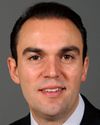Thank you.
Good afternoon, Honourable Members.
I am here to discuss the 2006-2007 Annual Report of the Public Service Commission and four audits that were tabled last week in Parliament, as well as two statistical studies that were also released at the same time.
I have with me today, Linda Gobeil, Senior Vice-President, Policy; Mary Clennett, Vice-President, Audit, Evaluation and Studies; and Donald Lemaire, Vice-President, Staffing and Assessment Services.
This was the first full year of operation under the modernized Public Service Employment Act. We have had an active year at the commission. While the public service workforce grew by only 1.7%, staffing activity increased by 11%, involving more than 110,000 staffing actions. Included is permanent hiring into the public service, which grew by more than 50%, from 5,090 appointments in 2005-2006 to 7,720 in 2006-2007.
We received more than one million applications in response to almost 5,700 advertisements on the commission's jobs website. There is certainly no shortage of interest in public service jobs, but we do know at the same time that there are specific areas where there are shortages.
Overall, we continue to have confidence in the strength of the staffing system. And we feel that departments and agencies have made progress in implementing new approaches to staffing. Most organizations—88%—have developed human resources plans that cover a good portion of their workforce, but they need to strengthen the link between their human resources plans and staffing actions.
We continue to have concerns about weaknesses in supporting the modernization effort. Departments and agencies must continue to strengthen human resources planning. The capacity of the human resources community and the need for better information to support planning and accountability continue to be areas that must be improved.
Let me now turn to two areas of particular concern that are in the annual report.
We are preoccupied with a pattern of recruitment that is being done through the temporary workforce. This is not new, but the size of this type of recruitment is of concern.
Over an eight-year period, more than 80% of the 86,000 new indeterminate employees hired for the permanent workforce had prior public service experience--75% either as casual or term employees. We are concerned there is a heavy reliance on building a permanent workforce through hiring of temporary workers. Hiring for short-term needs is not the best way to meet long-term requirements, and it is not a good way to attract qualified people who already hold permanent jobs. It will be important for departments and agencies to improve their human resource planning and how they hire their permanent workers.
We also continue to be concerned about employment equity, specifically the decline in the rate of hiring visible minorities. While overall recruitment rose by 9.5%, the recruitment for visible minorities dropped from 9.8% to 8.7%. We continue to do work in this area to better understand what is behind this phenomenon where we have observed large numbers of visible minority applicants without a corresponding number of hires.
The Public Service Commission, as part of its mandate, continues to be vigilant in maintaining an impartial public service. There is a requirement that public servants come to the commission to obtain permission before seeking elected office. Ninety-five public servants requested permission to be a candidate in a federal, provincial, or municipal election. Of these requests, 70 were for municipal elections. This is a new provision. Not all public servants were aware of this requirement, and one-third of these requests did not meet our requirement for timely application.
Now, let me turn to our oversight role: we conducted four audits in 2006-2007, three of them on small entities.
The findings of our audits on the NAFTA Secretariat—Canadian Section, and of the Canadian Forces Grievance Board were satisfactory.
However, in the third, an audit of the Office of the Correctional Investigator, we found staffing patterns that compromised the values of fairness, transparency and access. Nine out of 10 appointments were not compliant with the delegation agreement and, as a result, we have placed them under increased supervision.
In an additional audit, we looked at the pattern of movement of public servants to positions on ministerial staff and back into the public service. We examined the years 1990 to 2006. About 157 public servants made these transitions. We examined the nature, duration, and type of work and we retained 58 for further examination.
Of those 58, we found 24 staffing actions dealing with 20 individuals that raised questions. In 15 of these staffing actions relating to 13 individuals, we found a misuse of the staffing system. Special efforts were made to move people into positions in which they had no reasonable intention of staying. This was done to facilitate the movement of the individuals concerned and to ensure they had an easy route back into the public service.
These types of actions create the appearance of a lack of political impartiality and are not in accordance with the values of transparency and non-partisanship. We have concluded there is a vacuum in the policy framework and we have a made a recommendation to the employer, Treasury Board, to fill the policy gap and to better monitor this kind of movement.
Treasury Board Secretariat should develop and recommend to Treasury Board a clear policy statement and guidelines based on the principles of transparency and political impartiality to ensure effective compliance and monitoring. We had hoped for a clear commitment on a timely policy statement.
I would now like to update you on the national area of selection policy, the policy that sets who can apply for public service jobs based on where they live. The commission is committed to implementing national area of selection for external recruitment. We have continued to expand access to public service jobs. We have gone from making one in five public service jobs available to Canadians in 2006 to making more than half of them open to the public in 2007. In 2008, we would expand the national area of selection to cover all full-time federal student work experience jobs. We will be launching pilot projects in December to assess the impact of extending the national area of selection to all non-officer jobs.
We have slowed full implementation to ensure we have the human resource support and tools in place to handle the anticipated large volume of applications that will be generated by this expansion. We now expect full implementation by December 2008.
I have one last comment. We have been working hard to implement the provisions of the Public Service Employment Act. We have dedicated a great deal of effort to building up our audit and oversight capacity. We have also invested heavily in modernizing and transforming our services. Under the Public Service Employment Act, we were directed to take on new activities; in addition, our services have continued to grow.
Given our current level of resources, we have now reached a point where we cannot continue to provide all our statutory activities and support the system as required. We have to find alternative funding mechanisms, particularly because the demand for our support and services has continued well beyond what was expected in the delegated regime.
Discussions are currently underway with Treasury Board Secretariat as to how we can meet these funding requirements. We are looking at options to increase our capacity to recover costs from departments and agencies. The government has made public service renewal a priority. The Public Service Employment Act is a key enabler of the government's renewal agenda.
We are continuing to work with deputy heads, their managers, and the human resource community to ensure effective modernization of staffing and recruitment in the Government of Canada.
Finally, in 2008, the Public Service Commission will soon be celebrating its 100th anniversary. In 1908, Parliament expressed its will by creating a Civil Service Commission and since then, the commission has acted on behalf of Parliament to safeguard the integrity of staffing in the public service and the political impartiality of public servants.
Thank you for your attention, and I am happy to take your questions.



